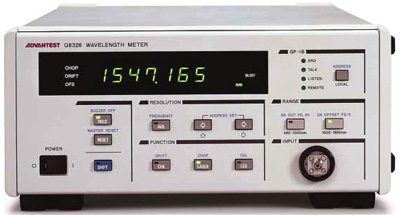
|
|
The Advantest Q8326 optical wavelength meter enables sigh-precision measurement of laser and light emitting diode wavelengths and frequency. The key features of the Q8326 are; Wide measurement ranges for wavelengths and frequencies: 480 nm to 1650 nm, and 181 THz to 625 THz, respectively. Highly accurate wavelength measurement: ±2 ppm ±l count. A high speed sampling rate of 5 measurements/sec. GPIB and D/A conversion analog output is standard. Specifications. Wavelength Measurable range: 480 nm to 1650 nm. Wavelength Accuracy: ± 2 ppm ± l count. Wavelength Display resolution: 1 nm to 0.0001 nm. Level Sensitivity: -15 dBm (480 nm to 600 nm), -25 dBm (600 nm to 1650 nm), -30 dBm (1200 nm to 1650 nm). Maximum input level: +10 dBm. Measurement time: 0.2 sec. Average Function: Displays the results of the moving average with an averaging count of 10. Deviation Measurement Function: Displays the deviation from the standard measured value. Input Fiber: 50/125 um GI fiber (Recommended), 9.5/125 um SM fiber (Recommended).
|